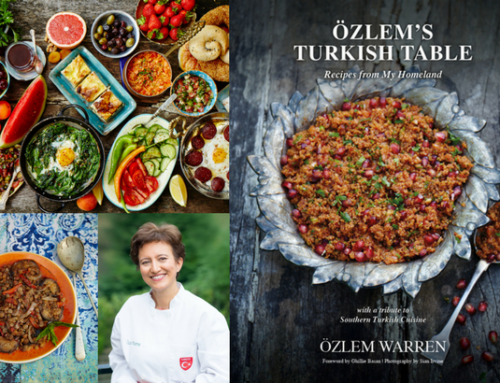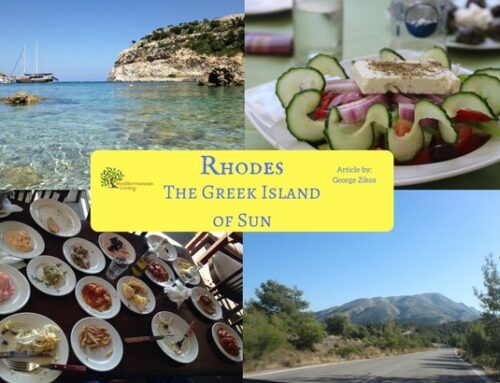New Feast Book Review
By Sarah Hodge
Updated February 2, 2015
The Middle East, which includes several countries that border the Mediterranean, has a long tradition of eating vegetarian. Common Middle Eastern dishes include vibrant fresh salads, dips and breads, as well as a diversity of stuffed vegetable dishes, pilafs, and hearty entrees. Similar to Mediterranean mezze and tapas traditions, smaller dishes are often shared for guests to help themselves. This relaxed and unstructured tradition allows diners to experience a wide range of complementary tastes and textures in a single meal.
“New Feast” is the seventh in the Maloufs’ series of award-winning food and travel books focusing on the Middle East, and is the first to be exclusively vegetarian. Greg’s reputation as the creator of a cooking style known as ‘Modern Middle Eastern’ reaches far beyond his native Australia. Lucy’s writing has appeared in compendiums of the best Australian food writing as well as Australian and international newspapers, journals and magazines.
As a longtime vegetarian and fan of Turkish and Middle Eastern cooking, I was particularly excited for this release. The recipes in “New Feast” are highly versatile and can be eaten at any meal. Twenty small sections introduce the reader to a wide range of pickles, dips, salads and stuffed vegetables. There are recipes for savory pastries, rice, grains, and breads. The seasoned naans and Middle Eastern pizzas make fantastic snacks or light meals when paired with simple mezze.
The dessert section includes ices, sweet pastries, and puddings. The traditional milk pudding muhallabeya is given a chocolate makeover complete with a Turkish coffee granita, while rice pudding is infused with saffron and topped with cardamom-spiced apricots.
True to Mediterranean culture, New Feast emphasizes leisurely meals and easy preparations of light and delicious food. Recipes make ample use of olive oil, spices and aromatics common throughout the Mediterranean (garlic, saffron, mint, parsley, basil). Not surprisingly, many of the dishes show clear influence from Mediterranean culinary traditions. There is an excellent Lebanese dandelion, leek, and barrel-aged feta pie that at first glance appears similar to Greek pies such as spanakopita, but the whisper of dried mint and chili flakes lends it a distinctly Middle Eastern flair. The heartier soups feature ingredients which are popular throughout the Mediterranean: the tomato and bean soup with harissa and honey combines thyme, garlic and olive oil with cannellini beans, Italian tomatoes, hard boiled eggs and sourdough bread for a rustic soup that will warm you on the chilliest day.
As I frequently tend to eat “breakfast” for dinner, I loved the breakfast offerings of Turkish eggs with spinach, chili, and yogurt cream, as well as Egyptian breakfast beans with feta, lemon oil and green chili relish. These also make a quick light lunch or supper when paired with one of the bread recipes. The first recipe I made was the Turkish milk rolls with yogurt glaze. The soft, pillowy rolls pair perfectly with the flavored butter recipes. I especially enjoyed the apricot-cardamom and the rhubarb, raspberry, and cardamom fridge jam.
The jewel-like salads are sure to brighten up any table; the citrus salad with red radicchio and pomegranate dressing and shaved zucchini with grana, burrata and basil are sure to be in my regular rotation.
The Maloufs include sample menu ideas for a range of occasions, which will give you plenty of ideas for incorporating the more than 130 recipes into a relaxed gathering in the spirit of Middle Eastern (and Mediterranean) dining. The oversized format and gorgeous photography make this a treat for the eyes as well. In the words of the Maloufs, “however humble the ingredients, Middle Eastern food is always bold and celebratory, fresh and vital and, above all, has an emphasis on flavor and on generosity of spirit.”












Bill Bradley, R.D. says:
Bill Bradley, R.D. says:
Bill Bradley, R.D. says: